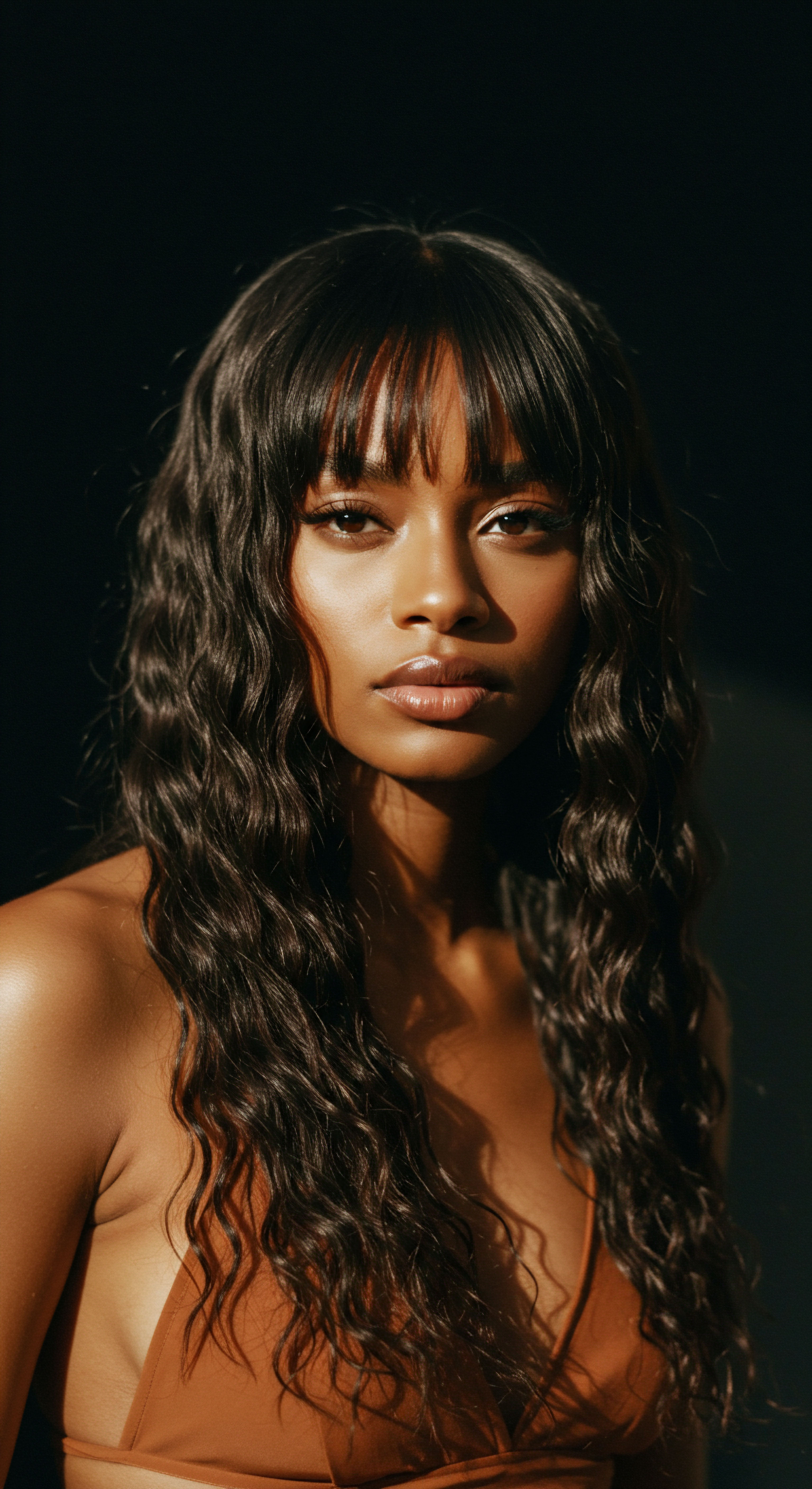
Roots
The very essence of a curl, its gentle curve or its vibrant coil, begins not with a styling product or a clever technique, but deep beneath the skin’s surface, within a tiny, living structure known as the hair follicle. This miniature organ, nestled within the scalp, serves as the blueprint for every strand that emerges, dictating its fundamental shape and, by extension, its curl pattern. Understanding this foundational biology allows us to appreciate the intrinsic design of our hair, moving beyond surface-level observations to a deeper connection with our inherent hair identity. It’s a quiet conversation between genetics and cellular architecture, a dialogue that unfolds in the hidden realm of the scalp, ultimately revealing itself in the beautiful, diverse textures we see and feel.
The follicle’s shape acts as a mold, influencing the keratinocytes, the cells that form the hair shaft, as they grow and harden. Imagine the hair shaft as a stream of clay being pushed through an opening; the shape of that opening will determine the clay’s final form. Similarly, the hair follicle’s cross-sectional shape directly impacts the hair fiber’s cross-sectional shape, which in turn governs its curl.

Follicle Form and Fiber Outcome
The relationship between follicle shape and curl pattern is quite direct. A follicle with a perfectly round cross-section will typically yield a straight hair strand. This is because the keratinocytes are arranged symmetrically around the central axis as they differentiate and keratinize. The resulting hair fiber has an even distribution of proteins, allowing it to grow without any inherent bends or twists.
As the follicle’s shape deviates from a perfect circle, becoming more oval or elliptical, the hair fiber produced begins to curve. This asymmetry in the follicle means that the keratinocytes on one side of the hair shaft are arranged differently or grow at a slightly different rate than those on the opposing side. This differential growth and protein distribution create tension within the hair fiber, causing it to bend and form a curve.
The greater the ellipticity or flatness of the follicle, the tighter the curl pattern tends to be. For instance, highly elliptical or kidney-shaped follicles are characteristic of tightly coiled or kinky hair, where the hair strand emerges with pronounced bends and twists along its length.
The fundamental shape of a hair follicle, acting as a living mold, dictates the inherent curl pattern of each strand.
Beyond the cross-sectional shape, the angle at which the hair follicle emerges from the scalp also plays a contributing role. Hair that grows straight out of the scalp is less likely to form a curve, even if its follicle has a slight oval shape. Conversely, hair that exits the scalp at a sharp angle is predisposed to bending, further accentuating any curl initiated by the follicle’s cross-sectional form. This combined influence explains why curl patterns can exhibit variations even across different areas of a single scalp.

Internal Cellular Dynamics and Curl
The story of curl extends beyond the outer shape of the follicle to the intricate cellular activity within. The dermal papilla, a cluster of mesenchymal cells located at the base of the hair follicle, plays a critical role in regulating hair growth and influencing hair shape. It signals to the hair matrix cells, which are rapidly dividing to produce the hair shaft. Studies suggest that an asymmetric arrangement of cells within the hair follicle, particularly in the proliferating pool of cells and the inner root sheath, contributes to the hair’s curvature.
- Follicle Cross-Section ❉ A round follicle yields straight hair.
- Oval Follicle ❉ Produces wavy or loosely curled hair.
- Elliptical Follicle ❉ Generates tightly curled or coily hair.
The distribution of different types of cortical cells within the hair shaft, namely orthocortex and paracortex, also contributes to the curl. In curly hair, these cortical cells are distributed unevenly. Orthocortex cells, which contain helically twisted intermediate filaments, are found predominantly on the inner side of the curl, while paracortex cells, with more parallel filaments, are on the outer side. This bilateral asymmetry in cellular arrangement and protein distribution creates an inherent tension, causing the hair fiber to bend and curl.
| Follicle Shape Round |
| Hair Fiber Cross-Section Circular |
| Resulting Curl Pattern Straight |
| Follicle Shape Slightly Oval |
| Hair Fiber Cross-Section Slightly Oval |
| Resulting Curl Pattern Wavy |
| Follicle Shape Oval to Elliptical |
| Hair Fiber Cross-Section Oval to Flattened Oval |
| Resulting Curl Pattern Curly |
| Follicle Shape Highly Elliptical or Kidney-Shaped |
| Hair Fiber Cross-Section Flattened Elliptical, Ribbon-like |
| Resulting Curl Pattern Coily or Kinky |
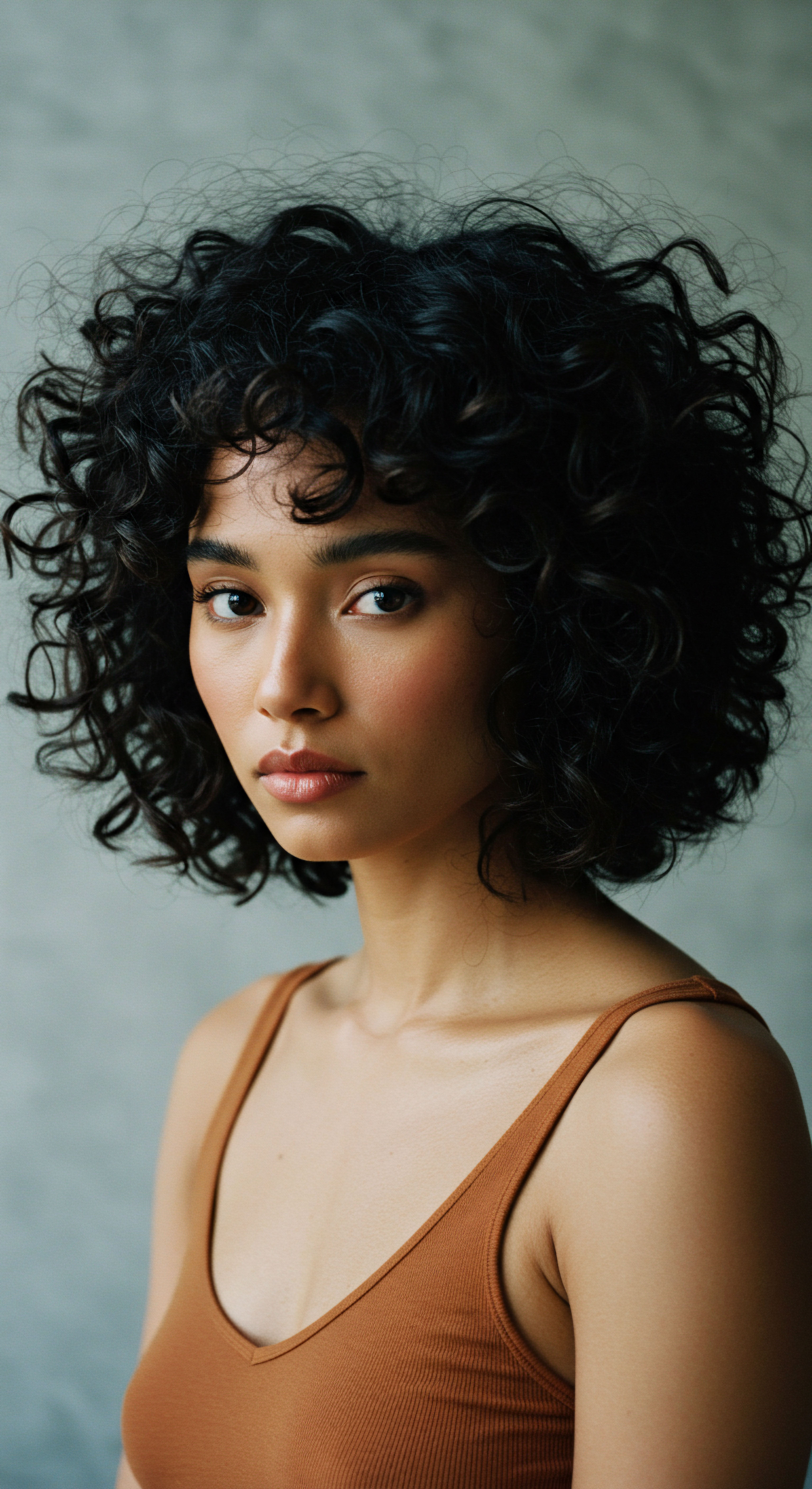
Ritual
Stepping from the hidden origins of curl within the follicle, we now consider how this intrinsic architecture guides our daily practices and care rituals. Our hair’s natural inclination, born from its follicle’s shape, isn’t a challenge to overcome but a unique set of instructions to learn. Understanding the “how” of our hair’s movement allows us to cultivate practices that truly honor its inherent qualities, transforming routines from a battle into a gentle dance. This segment invites us to consider the conscious choices we make, informed by science, to support the vitality and expression of our curls, rather than striving to impose a form that goes against their fundamental nature.
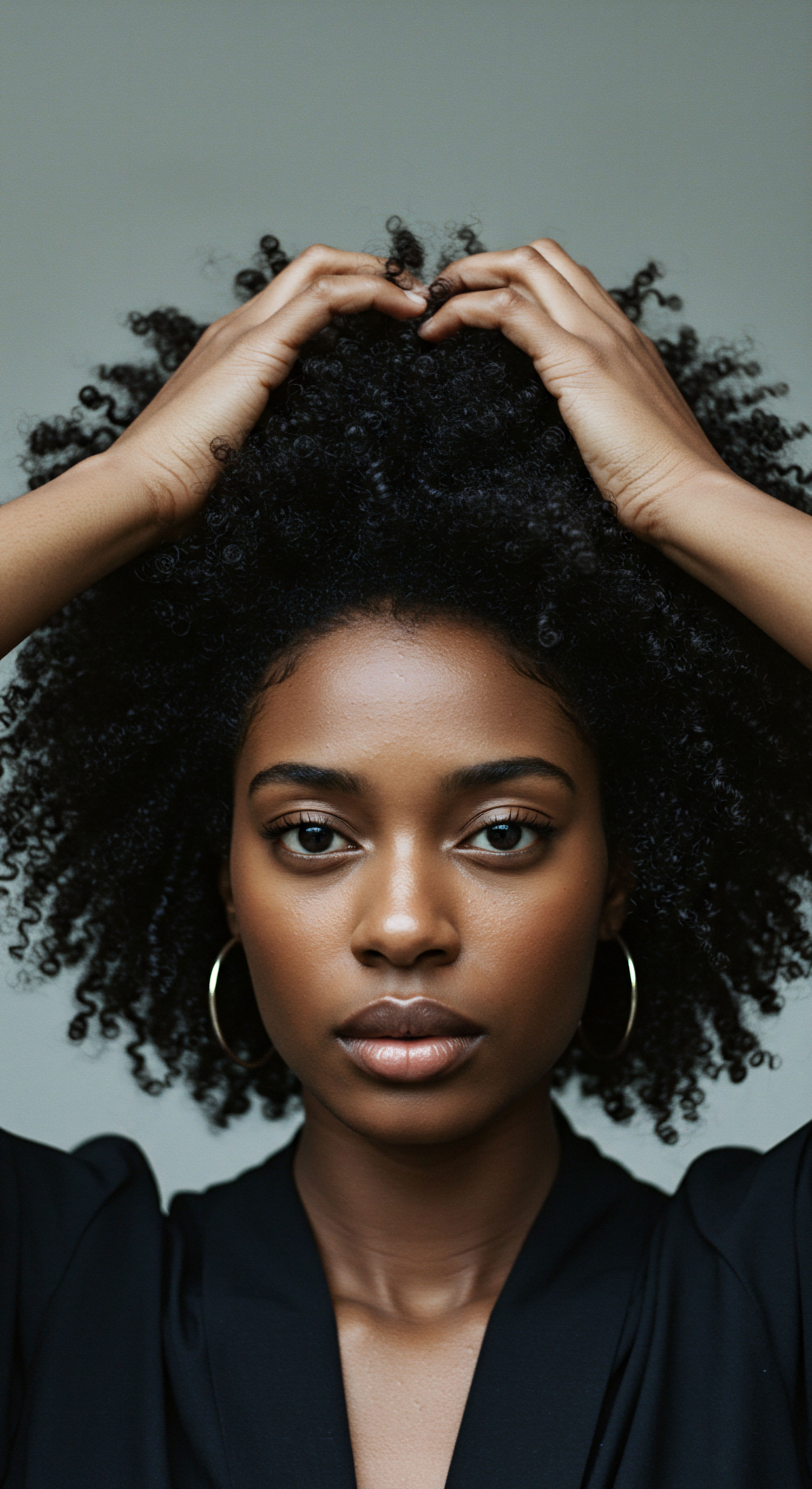
Responding to the Follicle’s Directive
The physical manifestation of follicle shape extends beyond visual curl to affect the very properties of the hair strand, influencing its behavior and needs. Hair emerging from elliptical follicles, characteristic of curly and coily textures, tends to be more prone to dryness. This is because the natural oils produced by the scalp, known as sebum, struggle to travel down the curves and bends of a textured strand, leaving the ends particularly vulnerable to dehydration.
Moreover, the uneven shape of a curly hair fiber means its cuticle, the outermost protective layer, can be slightly lifted or unevenly laid. This makes textured hair more susceptible to moisture loss and external damage, including frizz and breakage. Recognizing these inherent characteristics, born from the follicle’s design, is the initial step in building a supportive hair care regimen.
Hair care rituals should align with the inherent needs of curl patterns, which are shaped by follicle morphology.

Care Practices for Textured Hair
Tailoring care practices to the specific needs of textured hair, influenced by follicle shape, involves several key considerations:
- Moisture Prioritization ❉ Due to the difficulty of sebum distribution along curved strands, consistent and deep hydration is paramount. This includes using moisturizing shampoos and conditioners, incorporating leave-in conditioners, and regularly applying emollients or butters to seal in moisture.
- Gentle Handling ❉ The unique structure of curly and coily hair, with its often lifted cuticle and uneven protein distribution, makes it more fragile than straight hair. Detangling should be done with extreme care, preferably when wet and saturated with conditioner, using fingers or a wide-tooth comb to minimize breakage.
- Protective Styling ❉ Styles that minimize manipulation and exposure to environmental stressors can greatly benefit textured hair. This allows the hair to rest and retain moisture, reducing friction and potential damage to the cuticle.
Consider the simple act of washing. For straight hair, where the follicle is round and the hair shaft smooth, water and cleansing agents distribute evenly. For hair with an oval or elliptical follicle, the numerous bends and twists mean water can pool in some areas while others remain less saturated. This impacts how products are absorbed and rinsed, requiring a more deliberate approach to ensure thorough cleansing without stripping and effective conditioning.
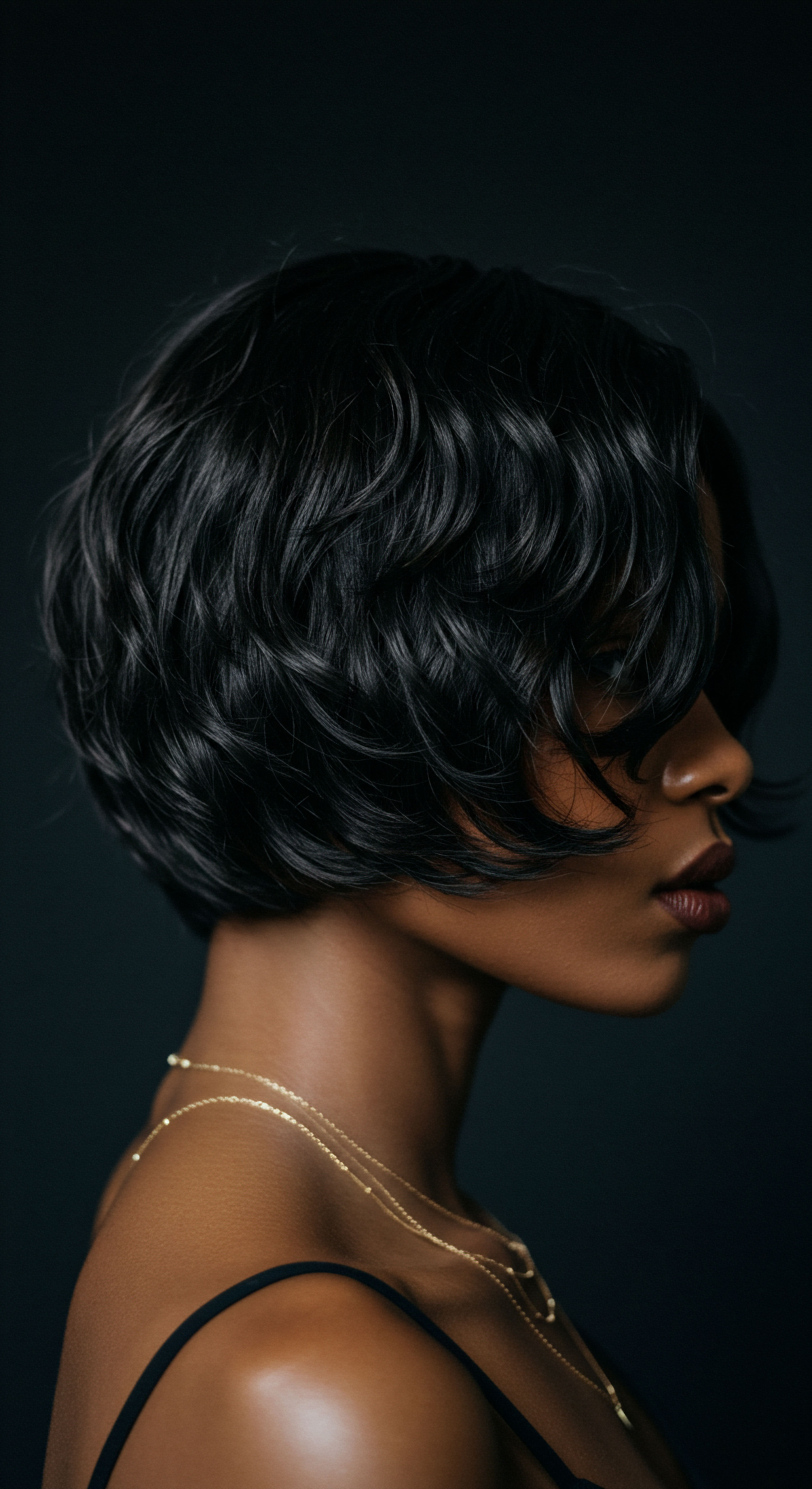
Styling with Intention
Styling textured hair becomes an act of collaboration with its natural inclination. Instead of fighting the curl, we seek to define, enhance, and protect it. Heat styling, for instance, can temporarily alter the hair’s shape by breaking hydrogen bonds, but the underlying follicle shape ensures the hair will revert to its natural curl pattern upon re-wetting.
For those with very tight curls stemming from highly elliptical follicles, methods that encourage clump definition, such as finger coiling or shingling, work with the hair’s natural tendency to group together. For looser waves, diffusing or scrunching can help amplify the inherent undulations. The choice of tools, from microfiber towels to diffusers, also plays a part in preserving the integrity of the curl pattern established by the follicle.
Ultimately, the ritual of caring for textured hair is a testament to understanding its origins. It’s about recognizing that the beauty of a curl is rooted in its biological design, inviting us to approach our hair with respect, patience, and a well-informed touch.

Relay
Moving beyond the foundational science and daily practices, we arrive at a deeper exploration, one that connects the microscopic world of the hair follicle to the grander narratives of human heritage, adaptation, and identity. The intricate interplay of biological mechanisms, evolutionary pressures, and societal perceptions creates a rich tapestry around hair curl, urging us to consider not just “how” it forms, but “why” it persists and what it signifies across diverse human experiences. This segment delves into the less visible layers of understanding, drawing upon advanced research to illuminate the complex forces that shape our strands and our stories.

How Does Genetics Determine Follicle Shape and Curl?
The shape of a hair follicle, and consequently the curl pattern of the hair it produces, is significantly influenced by genetic factors. While there isn’t a single “curl gene,” a combination of genes contributes to the diversity of hair textures observed across human populations. For instance, the TCHH Gene (trichohyalin) has been identified as a prominent contributor, with variations in this gene linked to differences in hair curliness. Trichohyalin is a protein present in the inner root sheath of hair follicles, and its arrangement impacts the structural strength and shape of the hair shaft.
Further research has pointed to other genes, such as EDAR and WNT10a, which play roles in hair morphology and cycling. These genes are part of complex signaling pathways, like the Wnt pathway, that regulate hair follicle development from embryonic stages through continuous cycles of growth. The interaction between epithelial and mesenchymal cells within the developing follicle, mediated by these genetic signals, is crucial in establishing the follicle’s characteristic shape.
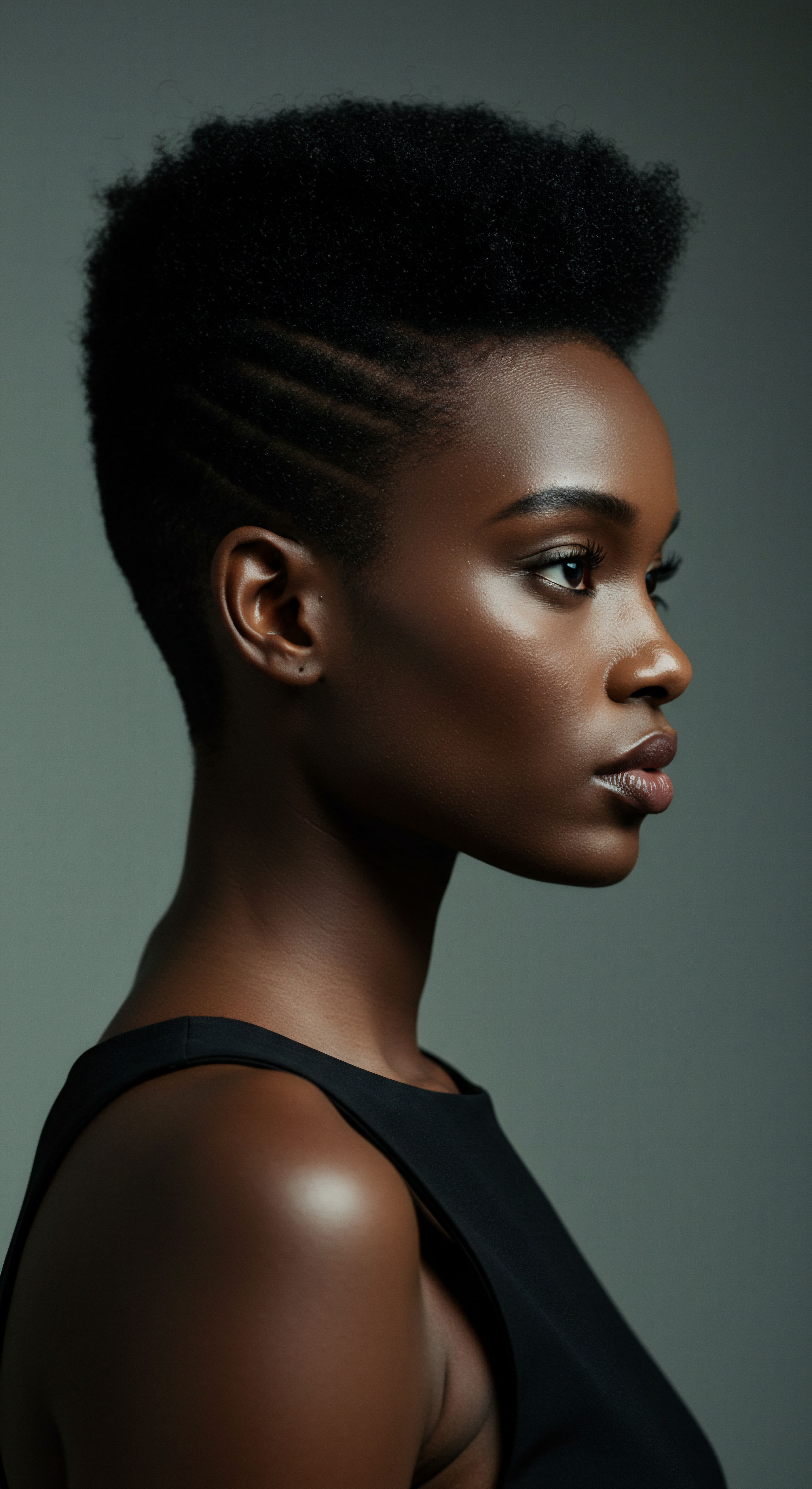
Evolutionary Pressures and Curl Diversity
One particularly thought-provoking aspect of hair follicle shape and curl patterns lies in their evolutionary significance. Why did such a wide spectrum of hair textures arise in human populations? Recent studies suggest that tightly curled hair may have conferred a significant adaptive advantage for early humans, particularly those originating in equatorial Africa.
A study using a thermal manikin, a human-shaped model that simulates body heat, revealed compelling data. Researchers tested wigs with different hair textures, including straight, loose curls, and tight curls, in a climate-controlled chamber. The findings indicated that tightly curled hair was most effective at minimizing heat gain from solar radiation on the scalp, thereby helping to keep the brain cool. This passive cooling mechanism would have been critical in hot, arid environments, allowing early humans to conserve water by reducing the need for sweating to regulate head temperature.
Tightly curled hair likely conferred an evolutionary advantage, aiding early humans in thermoregulation and water conservation in hot climates.
The research, published in bioRxiv, posited that tightly curled hair creates a denser, more insulating layer over the scalp while still allowing for air circulation, unlike straight hair which can lie flat and trap heat. This suggests that the prevalence of tightly coiled hair in populations of African descent is not merely a genetic quirk but a profound adaptation to environmental pressures, contributing to the survival and expansion of human intellect. This perspective offers a powerful counter-narrative to historical biases that sometimes devalued textured hair, reframing it as a testament to biological ingenuity and resilience.
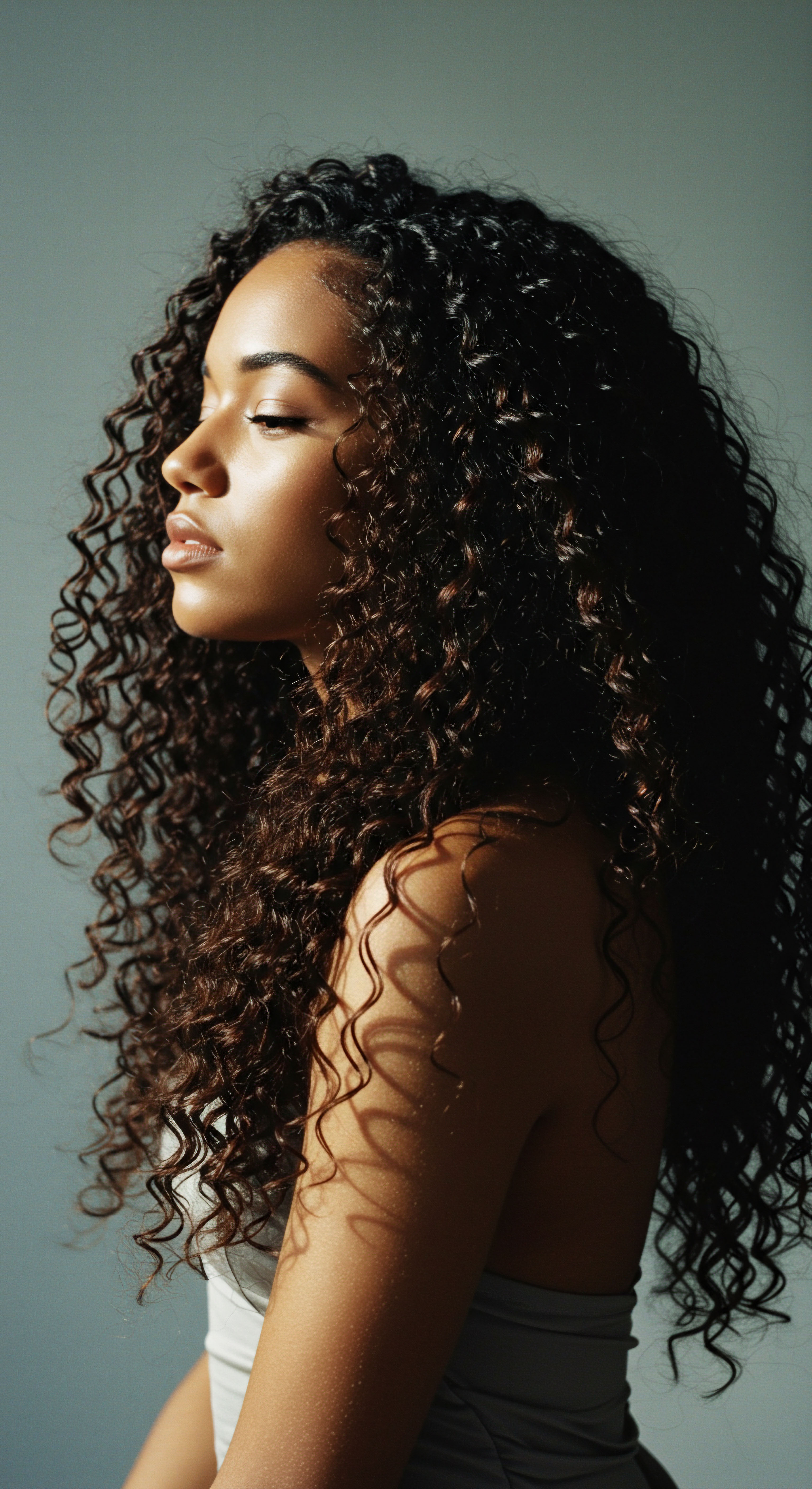
Dermal Papilla Cell Number and Hair Curvature
Beyond the genetic blueprint and external shape, the number and activity of dermal papilla cells (DPCs) also appear to play a role in determining hair curvature. DPCs are specialized mesenchymal cells at the base of the hair follicle that are critical for hair growth and regulating the hair cycle. Research in sheep, for example, has indicated a correlation between the proliferation of DPCs and the degree of wool curl.
A study explored the effect of EGR1 Gene Expression on DPCs and found that higher levels of EGR1 expression in DPCs correlated with increased curl in Hu sheep wool. This suggests that the proliferative capacity and signaling activity of DPCs can directly influence the curvature of the growing hair shaft. Furthermore, studies in mice have shown that the number of DPCs correlates with hair size and shape, and a reduction in DPC numbers can lead to changes in hair curvature, even transforming straight hairs into curved zigzag hairs. This adds another layer of biological complexity to how curl patterns are established and maintained.
This deeper scientific exploration underscores that hair curl is not a simplistic trait but a complex interplay of genetic programming, cellular dynamics, and even evolutionary adaptations, all rooted in the fundamental structure of the hair follicle.

Reflection
As we step back from the intricate world of the hair follicle and its profound influence on curl patterns, a sense of wonder remains. Our exploration has taken us from the microscopic architecture that shapes each strand to the grand sweep of human evolution and the deeply personal realm of identity. It reminds us that the hair we wear, in all its diverse textures, is a living record of biology, history, and resilience.
Every curve, every coil, whispers a story of adaptation, heritage, and the delicate balance of cellular life. May this understanding deepen your appreciation for the unique crown you carry, inspiring a care that honors its inherent design and a celebration of its timeless beauty.

References
- Westgate, Gillian E. et al. “The biology and genetics of curly hair ❉ a review.” Proceedings of the Royal Society A ❉ Mathematical, Physical and Engineering Sciences, vol. 475, no. 2231, 2019.
- Millar, Sarah E. “Molecular mechanisms regulating hair follicle development.” Journal of Investigative Dermatology, vol. 118, no. 2, 2002.
- Driskell, Robert R. et al. “Dermal papilla cell number specifies hair size, shape and cycling and its reduction causes follicular decline.” Development, vol. 140, no. 8, 2013.
- Fujiwara, Hisataka, et al. “Structural analysis of curly and straight human hair fibers by scanning microbeam SAXS.” SPring-8 Users Report, vol. 18, 2003.
- Takahashi, Tadashi, and Akira Adachi. “Hair shape of curly hair.” Journal of Cosmetic Science, vol. 54, no. 3, 2003.
- Martel, Julien, et al. “The Effect of EGR1 on the Proliferation of Dermal Papilla Cells.” International Journal of Molecular Sciences, vol. 23, no. 14, 2022.
- Ohuchi, Hiroshi, et al. “Fibroblast growth factor 10 is required for proper development of the mouse whiskers.” Biochemical and Biophysical Research Communications, vol. 302, no. 3, 2003.
- Mok, Ka-Wing, et al. “Dermal Condensate Niche Fate Specification Occurs Prior to Formation and Is Placode Progenitor Dependent.” Developmental Cell, vol. 49, no. 4, 2019.
- Jablonski, Nina G. and Tina Lasisi. “The adaptive evolution of human scalp hair.” bioRxiv, 2023.
- Lachgar, S. et al. “Minoxidil upregulates the expression of vascular endothelial growth factor in human hair dermal papilla cells.” British Journal of Dermatology, vol. 138, no. 3, 1998.